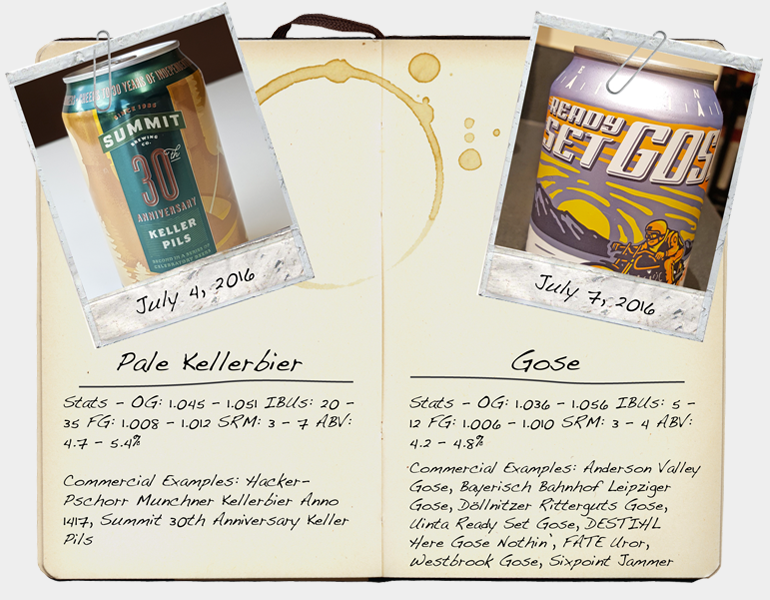Start 14-Day Trial Subscription
*No credit card required

Kellerbier and Gose
Gose
Gose (pronounced go-zuh), is another style rooted in German tradition that has found a firm foothold in the hearts and palates of modern connoisseurs. The bright, refreshing Gose style began in Goslar, Germany, where minerals from the nearby Harz Mountains provided the River Gose with a tangy, mineral quality that the locals described as “copper water.”

This water provided the base for what would become Gose, a spritzy, tart and salty beverage spiced with coriander that had the Bavarian region of Saxony buzzing as far back as 1239, the year of the first recorded mention of Gose from one Duke Otto von Braunschweig.
Stylistic hallmarks include noticeable, but balanced lacto acidity, wheaty to doughy malt character, moderate notes of stone or citrus fruits with a light body and dry finish, often punctuated with tartness.
This rollercoaster ride for the tastebuds was especially hot in Leipzig, capital of the German state of Saxony where, at the height of its popularity, at least 80 licensed Leipziger Gose houses served the briny suds. Things were groovy for Gose from 1738 until the early 20th century, when Germany’s geopolitical affairs detracted from time that might have otherwise been spent enjoying this delightfully sour concoction.
By the end of World War II, the last remaining Gose brewery had ceased production, and save for one small brewer in Leipzig from 1949 to 1966, the venerable Gose had ceased to be, and it took twenty years for a man named Lothar Goldhahn to revive the style at the Schultheiss Weissbier brewery.
Decades later, Gose has finally regained its stature both in Germany and America, where brewers are exploring piquant variations on the theme, adding all manner of adjuncts including lime, cucumber, blood orange, watermelon and blackberries. The Aloha Beer Company even experimented with seawater as a liquor for brewing Gose.
Similar to a Berliner Weisse, Gose is ripe for blending. It can be sweetened with syrups, or fortified with various liqueurs, and pairs well with robust seafood flavors like smoked salmon or oysters.
No longer an obscurity, Gose is gaining popularity as an easily palatable brew suitable for almost any occasion. Whether served in its traditional stange or a can, it remains a living piece of history perhaps more relevant than ever before.
Vital Statistics:
OG: 1.036 – 1.056
IBUs: 5 – 12
FG: 1.006 – 1.010
SRM: 3 – 4
ABV: 4.2 – 4.8%
Commercial Examples: Anderson Valley Gose, Bayerisch Bahnhof Leipziger Gose, Döllnitzer Ritterguts Gose, Uinta Ready Set Gose, DESTIHL Here Gose Nothin’, FATE Uror, Westbrook Gose, Sixpoint Jammer
Photo courtesy Flickr/Bernt Rostad.



